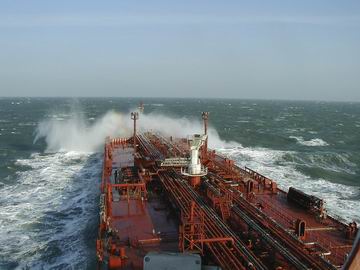In writing a motor specification there are various items that must be
considered to ensure that the motors are specified correctly.
These are as follows:
- AREA CLASSIFICATION THAT MOTOR IS TO BE USED IN.
- kW RATING AND SPEED REQUIRED.
- MOUNTING REQUIRED
- ELECTRICAL SUPPLY DETAILS
- CONSTRUCTION OF MOTOR.
- BEARINGS
- PAINTING
- TESTING
- INSULATION
- DOCUMENTATION
Each of these will now be considered.
This must be taken into consideration as it determines the type of motor
that can be used.
For normal non-hazardous area a Totally Enclosed fan Cooled (TEFC) motor
is suitable. These are available with various enclosure ratings such as
IP54, IP55, IP56, IP65, IP66 and IP67. The difference in the rating is
explained in AS1939.
As a rough rule of thumb the following is applicable.
- IP54 Weather proof
- IP55 Light hose proof
- IP56 High pressure Hose proof
- IP65 Complete protection against entry of dust and light hose proof
- IP66 Complete protection against the entry of dust and high pressure
hose proof
- IP67 Protection against immersion
For hazardous areas it is extremely important that the correct motor be
chosen. Please refer to our section on Hazardous Locations which details in
depth how to correctly select the correct motor.
Also the ambient temperature range of operation must be stated as this
can determine the class of insulation to be used and, in some instances, may
require special grease in the bearings.
These are determined by the driven equipment and are generally a
mechanical consideration rather than electrical.
Their are standard ratings available as set down in AS1359. 30.
The speed of the motors is determined by the number of poles and the
frequency of the supply.
The following approximations are applicable.
| |
50 Hertz |
60 Hertz |
| 2 Pole |
2880 rpm |
3460 rpm |
| 4 Pole |
1440 rpm |
1750 rpm |
| 6 Pole |
960 rpm |
1150 rpm |
| 8 Pole |
720 rpm |
860 rpm |
| 10 Pole |
580 rpm |
690 rpm |
| 12 pole |
480 rpm |
570 rpm |
The actual full load speed will depend upon the motor design.
These are explained in detail in AS1359.22.
The usual methods are as follows:
- Horizontal foot (B3) IM1001
- Horizontal flange (B5) IM3001
- Horizontal foot and flange (B3/B5) IM2001
- Vertical flange (V1) IM3011
The voltage, phase and frequency of supply must be stated complete with
tolerances required.
The correct voltage, on which the motor is required to operate, is
important as this can change the characteristics of the motor for no
apparent reason. If the voltage decreases by 5% the starting torque of the
motor will decrease by 10%. This could mean that the motor will now not
develop enough torque to start the load
The voltage tolerance must be also stated, such as +/- 10%. This will
ensure that the motor will operate correctly over the range.
It must be shown in the specification if the motor is to operate on three
phase or single phase as different motors are required.
The frequency of the supply must be stated as this can change the speed.
Again the tolerance must be stated
Please refer previous comments under kW rating and speed for examples of
how frequency can affect the speed..
The physical requirements of the motor must be shown. This will include
such items as cast iron frame, plastic fans etc.
Please refer to the examples of specifications which provide the details
required.
The requirement for the bearings must be stated. This should include
Brand name, ball or roller and method of greasing.
Again refer to the examples of specifications which provide the details
required
Clear and precise details of the paint finish must be given. For severe
chemical duty it may require the motor to have a special epoxy paint finish.
The type of paint required, Brand name and final colour should be stated.
Again refer to the examples of specifications which provide the details
required
It is important to state what testing is required. This can vary from a
routine test to a full performance test. Please refer to AS1359.60 which
details the different type of tests.
This is very important as it will determine the final surface temperature
that is acceptable and also affect the expected life of the motor. The types
available are:
- A Class 105
- E Class 120
- B Class 130
- F Class 155
- H Class 180
The selection will depend upon the ambient temperature in which the motor
is to be used. Please refer to AS1359.32 which provides details of the
different types of insulation.
The normal standard insulation is Class F with Class B rise.
It is important to state in the specification what documentation you
require to be submitted. This can vary from simple outline dimension
drawings and type test certificates to exploded view drawings, SAA
certification and as made drawings.


